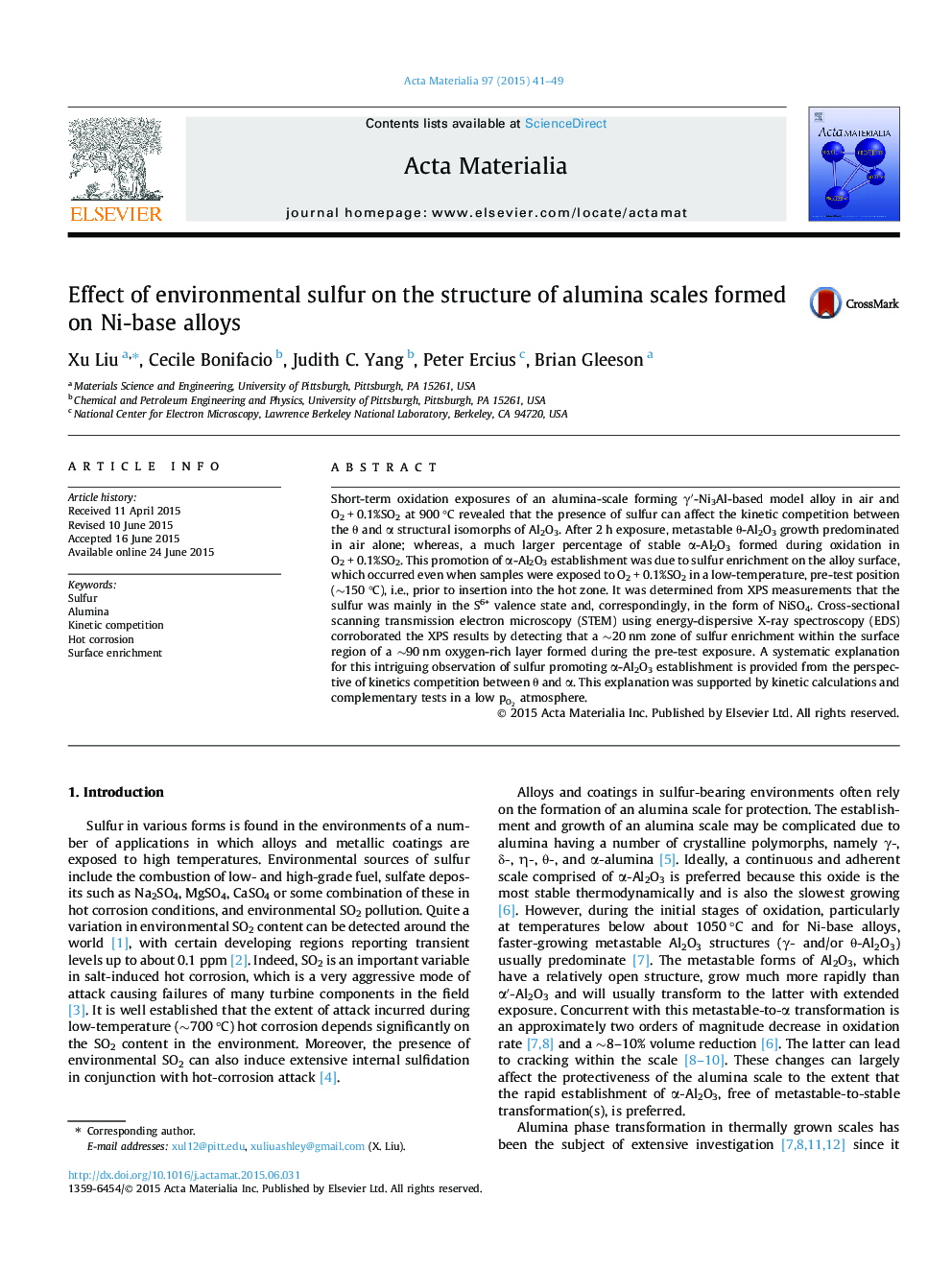| Article ID | Journal | Published Year | Pages | File Type |
|---|---|---|---|---|
| 1445300 | Acta Materialia | 2015 | 9 Pages |
Abstract
Short-term oxidation exposures of an alumina-scale forming γâ²-Ni3Al-based model alloy in air and O2 + 0.1%SO2 at 900 °C revealed that the presence of sulfur can affect the kinetic competition between the θ and α structural isomorphs of Al2O3. After 2 h exposure, metastable θ-Al2O3 growth predominated in air alone; whereas, a much larger percentage of stable α-Al2O3 formed during oxidation in O2 + 0.1%SO2. This promotion of α-Al2O3 establishment was due to sulfur enrichment on the alloy surface, which occurred even when samples were exposed to O2 + 0.1%SO2 in a low-temperature, pre-test position (â¼150 °C), i.e., prior to insertion into the hot zone. It was determined from XPS measurements that the sulfur was mainly in the S6+ valence state and, correspondingly, in the form of NiSO4. Cross-sectional scanning transmission electron microscopy (STEM) using energy-dispersive X-ray spectroscopy (EDS) corroborated the XPS results by detecting that a â¼20 nm zone of sulfur enrichment within the surface region of a â¼90 nm oxygen-rich layer formed during the pre-test exposure. A systematic explanation for this intriguing observation of sulfur promoting α-Al2O3 establishment is provided from the perspective of kinetics competition between θ and α. This explanation was supported by kinetic calculations and complementary tests in a low pO2 atmosphere.
Related Topics
Physical Sciences and Engineering
Materials Science
Ceramics and Composites
Authors
Xu Liu, Cecile Bonifacio, Judith C. Yang, Peter Ercius, Brian Gleeson,
